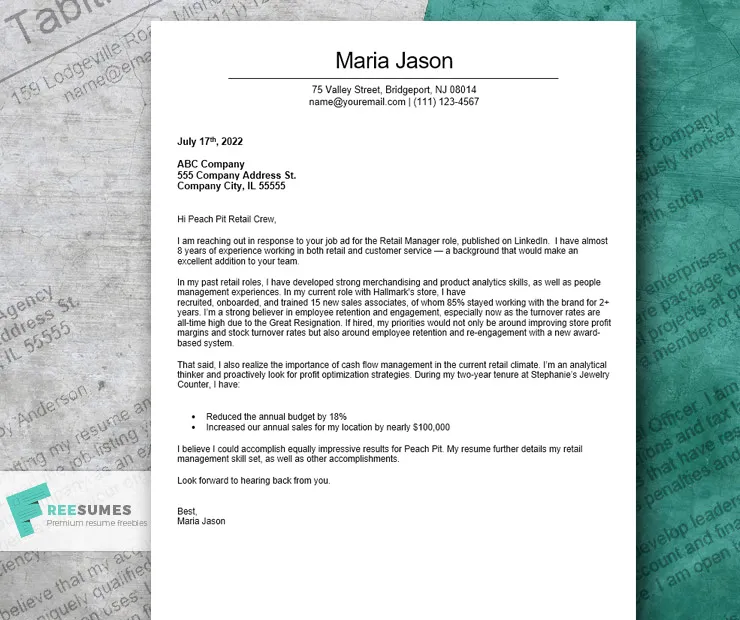What is a Retail Manager Cover Letter?
A Retail Manager cover letter is a crucial document that accompanies your resume when applying for retail management positions. It serves as your first introduction to a potential employer, allowing you to showcase your skills, experience, and enthusiasm for the role. Unlike a resume, which provides a factual overview of your career, a cover letter gives you the opportunity to highlight your personality, explain your career goals, and demonstrate why you are the ideal candidate for the specific job.
Why is a Retail Manager Cover Letter Important?
A well-crafted cover letter is essential for making a positive first impression. It allows you to personalize your application, demonstrating that you have taken the time to understand the company and the job requirements. Furthermore, a cover letter provides a space to elaborate on your key accomplishments and skills, linking them directly to the needs of the employer. A strong cover letter increases your chances of securing an interview, setting you apart from other applicants who may only submit a resume. It shows that you care about the position.
Key Sections of a Retail Manager Cover Letter
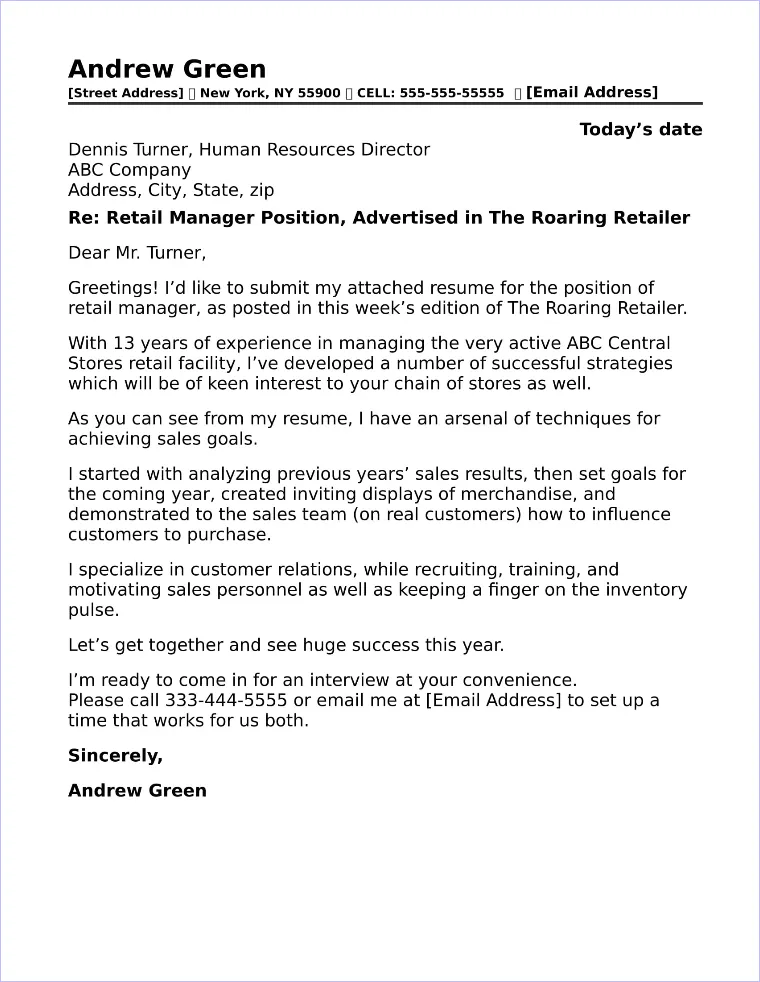
A compelling cover letter is structured with key sections to ensure clarity and impact. These sections work together to tell a story of your suitability for the retail manager position. From the header containing your contact details to the closing paragraph that includes a call to action, each component plays a vital role in conveying your qualifications and enthusiasm. Understanding each section is crucial for creating a cover letter that captures the attention of the hiring manager.
Header Section
The header section should include your contact information to ensure that the hiring manager can easily reach you. This typically includes your full name, phone number, email address, and sometimes your LinkedIn profile URL. It’s important to ensure that this information is accurate and up-to-date. The header is the first thing the hiring manager sees, so it is important to be professional and easily visible. A well-formatted header sets a professional tone.
Contact Information
Your contact information must be clear and easy to read. Use a professional email address and a phone number where you are easily reachable. It is advisable to have a dedicated email address for job applications to maintain a professional appearance. It’s important to check the contact information regularly to avoid missing any important communications.
Date
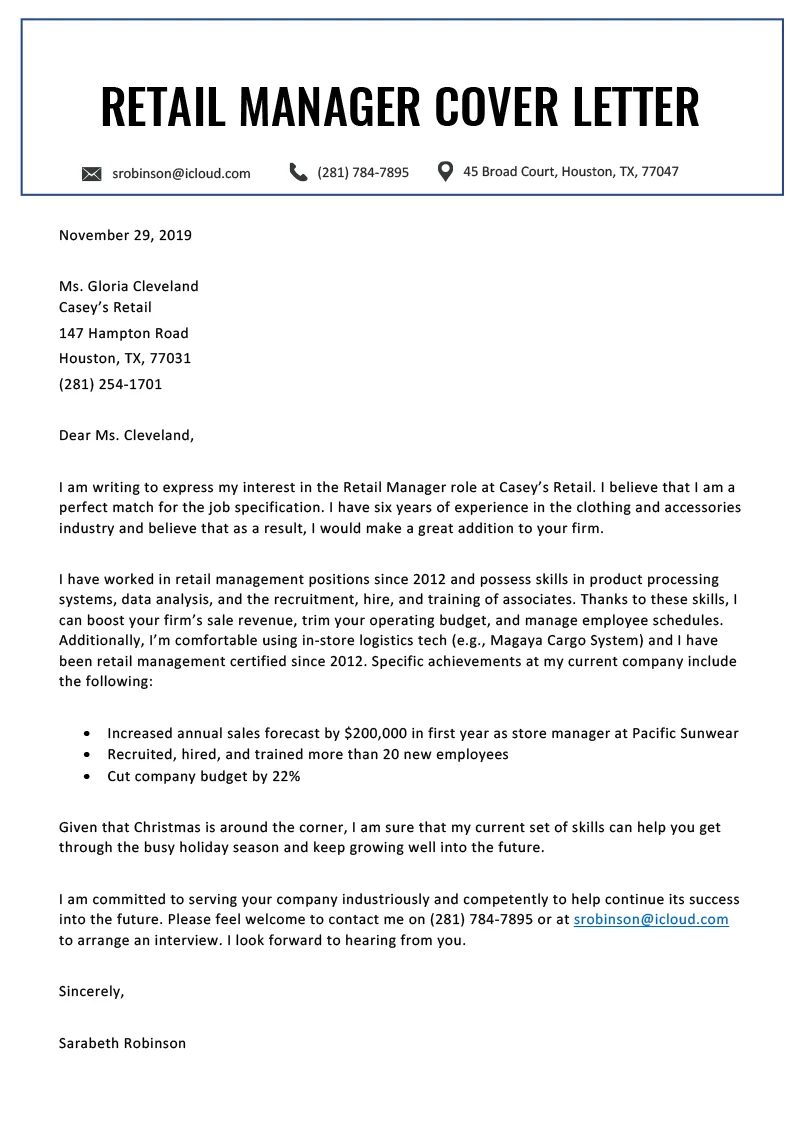
The date should be the current date when you are submitting the cover letter. This helps the employer know when the application was sent. Place the date directly below your contact information, aligning it to the left or right, depending on your preferred style. Ensure the date format is consistent throughout the document.
Recipient Information
Include the hiring manager’s name and title if possible. Addressing your letter to a specific person shows that you’ve done your research and are genuinely interested in the position. If you cannot find a name, use a professional greeting like ‘Dear Hiring Manager’. The recipient’s information should be placed below the date and aligned to the left or the right, consistent with your chosen format.
Salutation
Begin your cover letter with a professional greeting. ‘Dear Mr./Ms./Mx. [Last Name]’ is a formal and respectful option if you know the hiring manager’s name. If you don’t know the name, ‘Dear Hiring Manager’ or ‘Dear [Company Name] Hiring Team’ are acceptable. Avoid using generic greetings like ‘To Whom It May Concern’, as it can make your letter seem impersonal. The salutation sets the tone for the rest of the letter.
Opening Paragraph
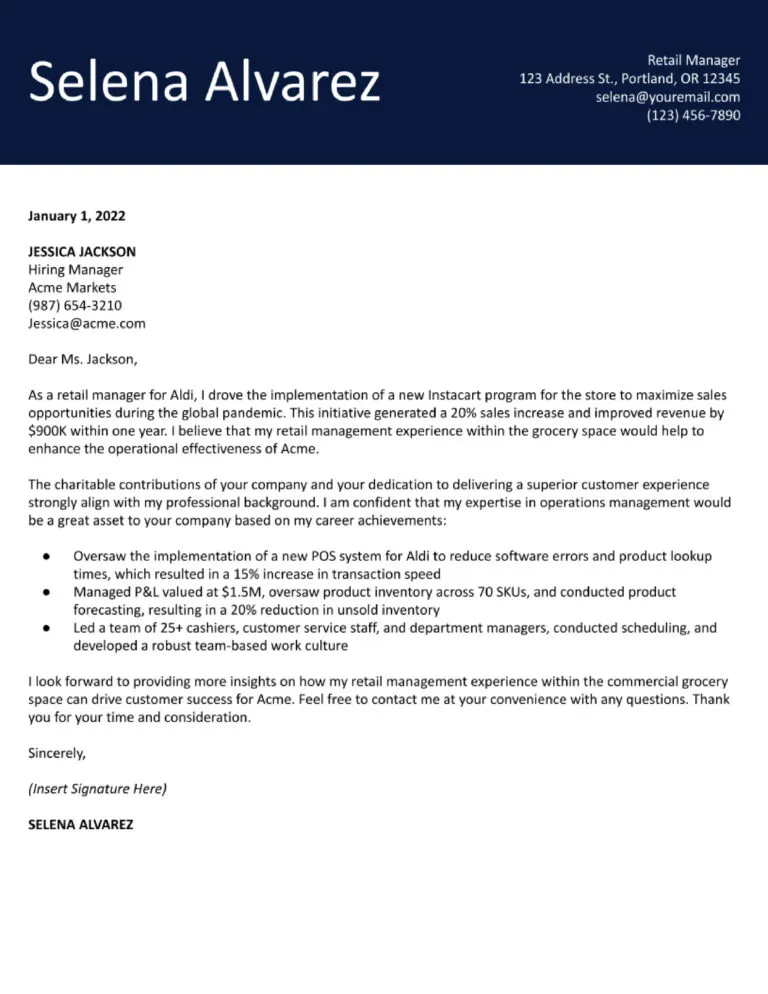
The opening paragraph should immediately grab the reader’s attention. State the position you are applying for and how you found the job opening. Briefly mention your strongest qualifications or a key achievement that aligns with the job requirements. Your introduction should clearly convey your enthusiasm for the role and the company. This is your opportunity to make a strong first impression.
Highlighting Relevant Skills
In the body of your cover letter, highlight the skills that make you a great fit for the retail manager position. Refer to the job description and identify the key requirements. Provide specific examples of how you have demonstrated these skills in previous roles. Focus on skills that align with the job description, such as leadership, sales, customer service, and operational experience. Providing concrete examples increases the credibility of your claims.
Leadership Abilities
Retail managers must have strong leadership skills. Provide examples of how you have led and motivated teams. Mention any training programs you have conducted or any initiatives you’ve led that improved team performance. Quantify your achievements whenever possible. Highlighting your ability to mentor and guide employees can be very impactful.
Sales and Customer Service Proficiency
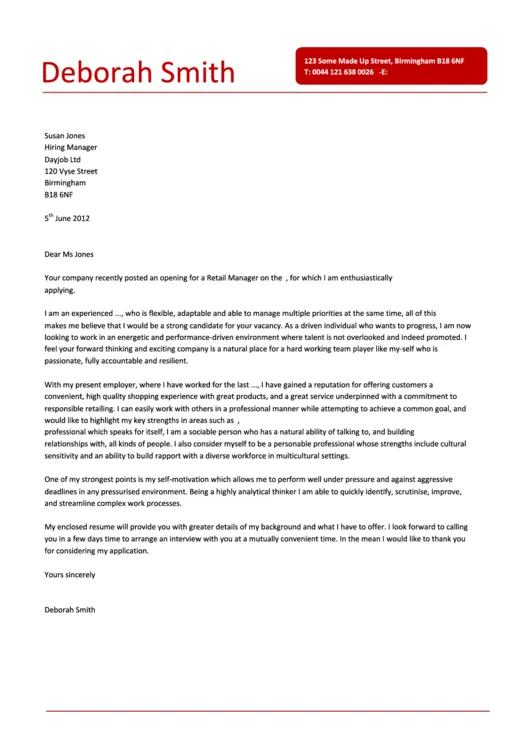
Showcase your experience in sales and customer service. Provide examples of how you have increased sales, improved customer satisfaction, or resolved customer complaints. Mention any customer service training you have received or implemented. Highlight your ability to build rapport with customers and create a positive shopping experience. Positive customer experiences lead to repeat sales and positive word of mouth.
Operational Experience
Describe your experience in managing store operations, such as inventory control, scheduling, and loss prevention. Mention any specific systems or software you have used. Demonstrate your ability to streamline processes, reduce costs, and improve efficiency. Highlight your experience with opening or closing procedures, cash handling, and visual merchandising. Effective operational skills are crucial for the success of any retail store.
Quantifying Achievements
Whenever possible, quantify your achievements to make them more impactful. Use numbers and data to illustrate your accomplishments. For example, mention the percentage increase in sales you achieved, the reduction in costs you implemented, or the improvement in customer satisfaction scores. Quantitative data provides concrete evidence of your skills and contributions, which is important for a retail manager to include.
Using Action Verbs
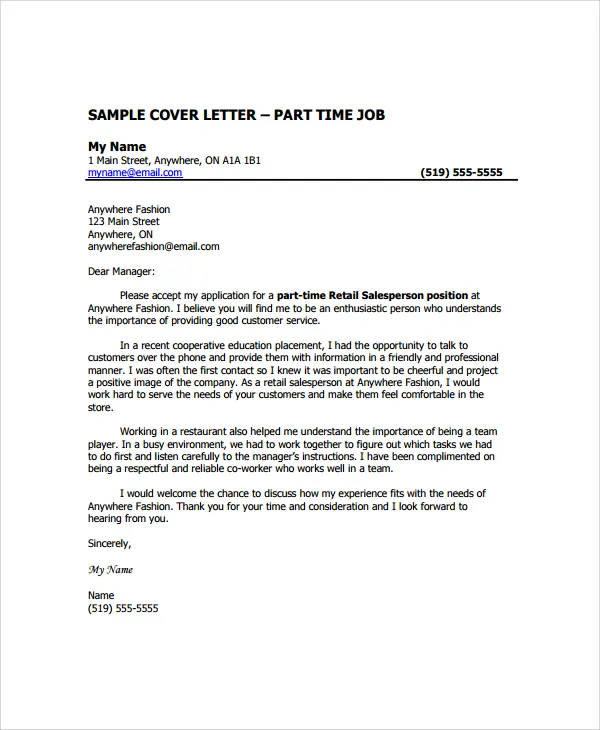
Use strong action verbs to describe your responsibilities and achievements. Action verbs make your cover letter more dynamic and engaging. Instead of saying ‘Responsible for managing staff,’ use ‘Managed and mentored a team of 20 employees.’ Here are some useful action verbs to use: ‘achieved,’ ’led,’ ‘implemented,’ ‘increased,’ ‘reduced,’ ‘managed,’ ’trained,’ ‘developed,’ ‘improved,’ ’negotiated,’ ‘oversaw’, ‘streamlined’. This will show the employer how you operate.
Closing Paragraph
The closing paragraph should summarize your interest in the position and reiterate your enthusiasm for the company. Briefly restate your key qualifications and thank the hiring manager for their time and consideration. Express your eagerness to discuss your qualifications further in an interview. A strong closing paragraph reinforces your interest and encourages the reader to contact you.
Call to Action
Include a clear call to action in your closing paragraph. State that you are available for an interview and how the hiring manager can contact you. Mention that you look forward to hearing from them. This makes it easy for the hiring manager to take the next step and move you forward in the hiring process.
Sign-off
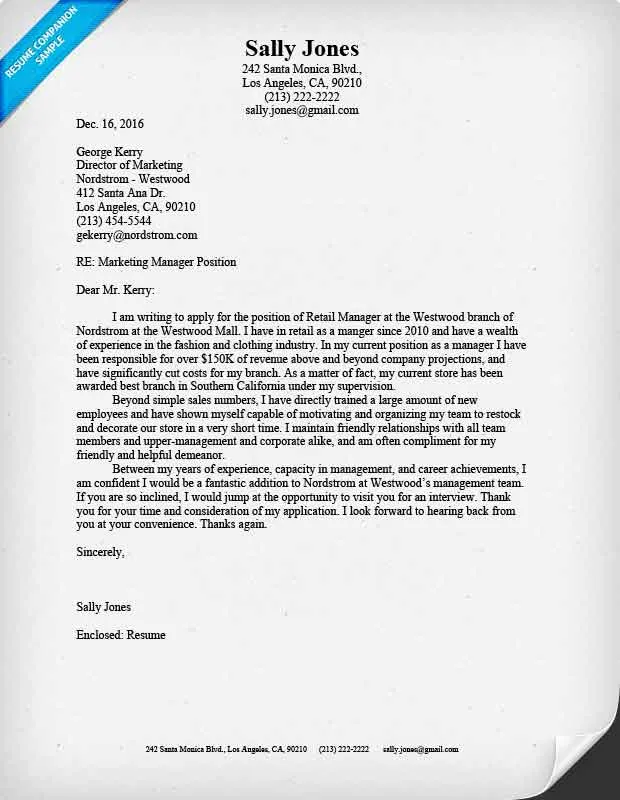
End your cover letter with a professional sign-off. Common options include ‘Sincerely,’ ‘Best regards,’ or ‘Thank you.’ Ensure you leave enough space for a physical signature if you are printing the letter. A proper sign-off completes the professional tone of your cover letter.
Formatting and Style Tips
Pay attention to the formatting and style of your cover letter to ensure it is professional and easy to read. Use a clear and concise writing style, avoiding jargon and overly complex sentences. Maintain consistency in your formatting throughout the document. Proofread your cover letter carefully to eliminate any errors. A well-formatted and error-free cover letter demonstrates your attention to detail.
Font Selection
Choose a professional and readable font, such as Times New Roman, Arial, or Calibri. Ensure the font size is between 10 and 12 points to make it easy to read. Avoid using overly decorative or unusual fonts, as they can make your cover letter look unprofessional. Consistency is crucial when selecting a font.
Letter Length
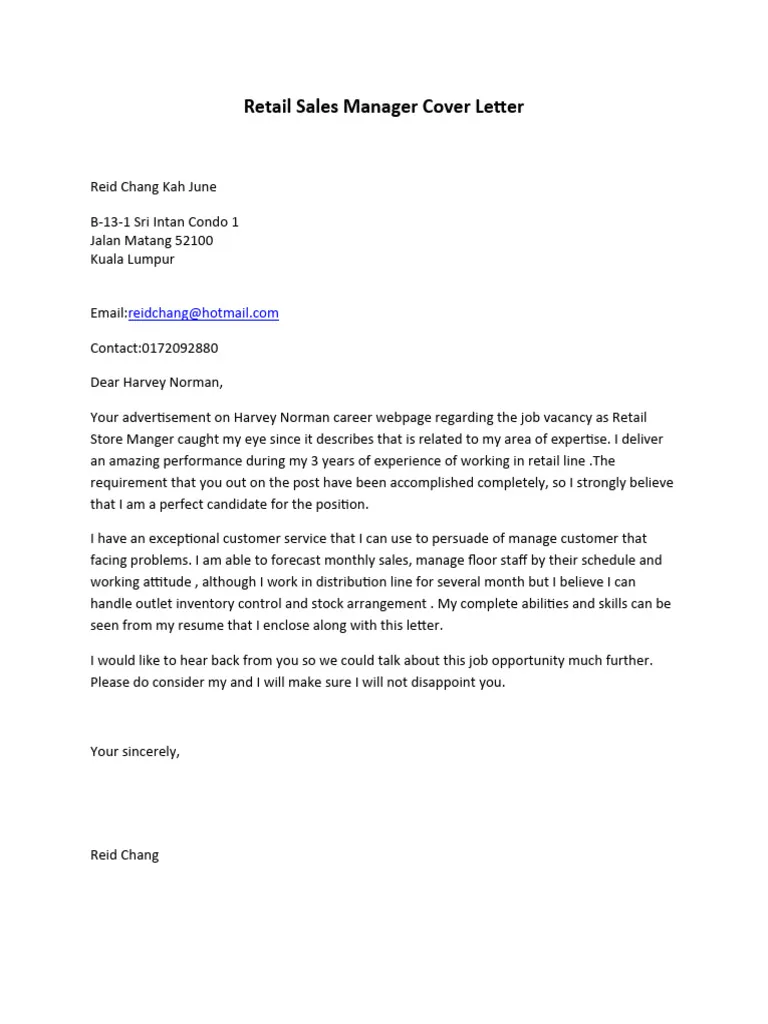
Keep your cover letter concise and to the point. Aim for one page, as hiring managers often have limited time to review applications. Focus on the most relevant information and avoid unnecessary details. Make every word count and ensure your cover letter is easy to read.
Proofreading and Editing
Proofread your cover letter carefully for any grammatical errors, spelling mistakes, or typos. It’s best to have someone else review your cover letter as a second pair of eyes can catch errors you might have missed. Errors can damage your credibility and make you appear less professional. Correct all mistakes before submitting your cover letter.
Common Mistakes to Avoid
Avoid common mistakes that can undermine your cover letter. These include using generic templates without personalization, providing irrelevant information, and including excessive jargon. Also, avoid negative language or complaining about previous employers, which can reflect poorly on you. Making these mistakes diminishes your chances of securing an interview.
Template and Examples
Use a cover letter template as a starting point, but always personalize it to match the job description and the company’s requirements. Many online resources offer cover letter templates for retail managers. Review examples to get ideas, but ensure your letter reflects your unique skills and experience. A well-tailored cover letter will always make the best impression.
Cover Letter Example for Retail Manager
A sample cover letter can guide you in structuring your own. Review examples from different sources and adapt them to your own situation. Pay close attention to the formatting, language, and the types of information included. Note how achievements are quantified and how skills are aligned with the job requirements. Modify examples to fit your own experience and personality.
Tailoring Your Cover Letter
Tailor your cover letter to each specific job application. Customize your letter to match the job description, highlighting the skills and experience that are most relevant to the position. Tailoring shows that you’ve invested the time to understand the role and the company’s needs. A tailored cover letter is much more effective than a generic one.
Researching the Company
Research the company before writing your cover letter. Learn about their mission, values, and recent achievements. This information will help you tailor your letter and demonstrate your interest in the company. Mention specific aspects of the company that appeal to you. This helps you make a more informed and personalized approach.
Matching Skills to Job Description
Carefully review the job description and identify the key skills and qualifications required for the retail manager position. Highlight your skills and experience that align with these requirements. Use keywords from the job description to make your cover letter more relevant. By focusing on the skills the employer seeks, you can increase the chances of getting an interview.
The Importance of a Strong Cover Letter
A strong cover letter is crucial for any aspiring retail manager. It provides a platform to showcase your skills, experience, and enthusiasm for the role. By following the guidelines and tips outlined in this guide, you can create a cover letter that will impress hiring managers and increase your chances of getting an interview. A well-written cover letter can make all the difference in your job search.
